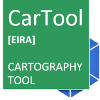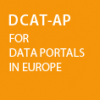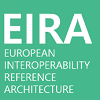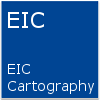Recommendation 44 | Conceptual model: Catalogues
Put in place catalogues of public services, public data, and interoperability solutions and use common models for describing them.
Solutions
| List of all available solutions that implement this recommendation |
|---|

|
Being a list of specifications the library acts as a catalogue of technical specifications. |

|
The CAMSS Ontology defines the conceptual model that helps to ensure the common and standardized way for the assessment and identification of Interoperability Specifications. Hence, easing to public administrations on the development of public services. |

|
CarTool provides a common model for describing interoperability solutions. It allows its users to model solutions using EIRA, and querying features to query an EIRA-based Cartography of solutions. |

|
Public administrations can use CPSV-AP to describe their Catalogues of Services in a standardised way. |

|
DCAT-AP allows data catalogues to describe their dataset collections using a standardised description. |

|
EIRA can support public administrations as a common model to describe interoperability solutions, including making of catalogues of public data, common solutions and other public assets. |

|
The EIC identifies the solutions in a common way using EIRA as a reference architecture. |

Location Framework Blueprint
|
EULF Blueprint Recommendation 7 on reuse of SDI/INSPIRE models for digital public services contains recommendations to ensure SDI/INSPIRE data and services are discoverable in thematic, national, and EU catalogues and portals. EULF Blueprint Recommendation 11 to reuse existing authentic data, data services and relevant technical solutions where possible, contains a recommendation to use an online catalogue of re-usable technical solutions to find relevant solutions and references the European Commission catalogue of re-usable technical solutions on Joinup. |

|
One of the key output of this action is the common and shared European data model for publishing and sharing eMandates across borders. |

|
Question D5 of the Service Delivery section of the IMAPS questionnaire assesses to which extent public administrations have put in place catalogues describing available public services to citizens and businesses. |
| Joinup provides a catalogue of solutions which can be reused by public administrations when developing their own solutions. | |

|
PMKI will provide a publicly available infrastructure for public linguistic resources, in order to facilitate the implementation of interoperability solutions and use common models for describing them. It will also help resource managers to create semantic links between language resources (for instance semantic mapping between concepts). |

LIMAPS v1.0.0 |
Question D5 of the Service Delivery section of the LIMAPS questionnaire assesses if the legal requirements of the public service delivery are available publicly to end-users (citizens, businesses, administrations) e.g. in a legal catalogue in order to enable its discoverability. Furthermore, question C6 of the Service Consumption section of the LIMAPS questionnaire assesses how the legal requirements of the client services consumed are made available (ad-hoc, in a formalised way via a legal catalogue, etc.) |

OIMAPS v1.0.0 |
Question D5 of the Service Delivery section of the OIMAPS questionnaire assesses the organisational behavioural interoperability capabilities than enable the digital public service to be available, easily identifiable and discoverable by its end-users or other services. Furthermore, question C4 of the Service Consumption section of the OIMAPS questionnaire assesses to which extent thee public service is able to discover other services for consumption (machine-to-machine consumption). |

TIMAPS v1.0.0 |
Question D7 of the Service Delivery section of the TIMAPS questionnaire assesses the means by which the digital public service is visible (discoverable) to other public services or end-users. Service visibility examines how easily the digital public service delivered is being discovered by another public service or by an end-user. Furthermore, question C5 of the Service Consumption section of the TIMAPS questionnaire assesses how easily the consumed public service is discovered by another public service or by an end-user. |

SIMAPS v1.0.0 |
Question D10 of the Service Delivery section of the SIMAPS questionnaire assesses how easily the data delivered by a public service are being discovered either by another public service or by an end-user. It focuses on the means that publish the data and trigger/enable the awareness of the consumers (public service or end-user). Furthermore, question C14 of the Service Consumption section of the SIMAPS questionnaire assesses the mechanisms that the public service has in place to effectively and efficiently discover the already published data. |




